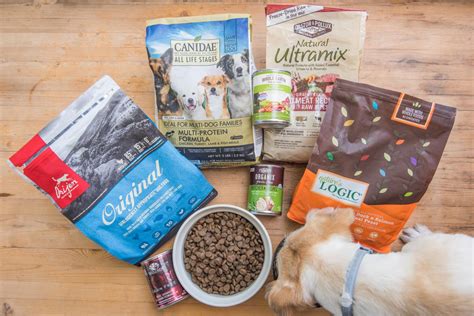Discover the key to meeting your dog’s nutritional needs, understanding different food types, evaluating ingredients, and transitioning to a new diet. Consult a vet for personalized recommendations.
Understanding your dog’s nutritional needs
Dogs are not just our pets; they are also members of our families. Just like with any family member, it’s important to ensure that our dogs are well taken care of, and one of the key ways to do that is by providing them with the best possible nutrition they need. Understanding your dog’s nutritional needs is crucial in maintaining their overall health and well-being.
One of the most important things to consider when it comes to understanding your dog’s nutritional needs is their age, size, and activity level. Puppies, adult dogs, and senior dogs all have different nutritional requirements, and it’s important to choose a dog food that is tailored to meet those specific needs. Additionally, larger breeds may require a different diet compared to smaller breeds, and active dogs may need more protein and calories to fuel their energy.
It’s also essential to consult with a veterinarian to get recommendations on the best dog food for your pet. They can provide personalized advice based on your dog’s individual health, dietary requirements, and any special considerations. By understanding your dog’s nutritional needs and choosing the right dog food, you can help ensure that your furry friend lives a long, healthy, and happy life.
Different types of dog food available
When it comes to choosing the right dog food for your furry friend, there are a variety of options available in the market. One of the most common types of dog food is kibble, which is convenient and easy to store. It comes in various flavors and is often formulated to cater to different life stages and dietary needs. Wet dog food, on the other hand, is another popular choice and is usually packed with high moisture content, making it a great option for dogs who need to stay hydrated.
Raw dog food is gaining popularity among pet owners who prefer a more natural and unprocessed diet for their dogs. It consists of raw meat, bones, fruits, and vegetables, providing a diet that closely mimics what a dog would eat in the wild. Dehydrated dog food is also becoming increasingly popular, as it is minimally processed and retains most of the nutrients found in raw ingredients. This type of food is lightweight and convenient for traveling.
Another type of dog food available is freeze-dried dog food, which is similar to dehydrated dog food but undergoes a different process. This type of dog food is considered to be one of the most natural options, as it does not undergo any form of cooking. It is shelf-stable and can be easily rehydrated by adding water, making it a convenient choice for pet owners. As a responsible pet owner, it is important to carefully consider the benefits and drawbacks of each type of dog food before making a decision, taking into account your pet’s specific dietary needs and preferences.
Evaluating ingredients in dog food
When it comes to choosing the best dog food for your pet, it’s important to carefully evaluate the ingredients that make up the product. The quality of the ingredients will directly impact your dog’s health and well-being, so it’s crucial to understand what to look for on the label.
Look for whole and recognizable ingredients such as meat, vegetables, and grains. Avoid products that list vague or generic terms such as meat by-products or animal digest, as these can be indicative of low-quality ingredients and lack of nutritional value.
Additionally, pay attention to the order in which the ingredients are listed. Ingredients are listed in descending order by weight, so make sure that high-quality, whole ingredients are found towards the top of the list, indicating a higher concentration in the product.
Considerations for special dietary requirements
When it comes to choosing the best dog food for your pet, it is important to consider any special dietary requirements they may have. Just like humans, dogs can have unique nutritional needs based on their age, breed, size, and any existing health conditions. It’s crucial to consult with a veterinarian to identify any specific dietary restrictions or recommendations for your dog.
Some dogs may have food sensitivities or allergies, which can impact the type of food they can safely consume. In these cases, it’s important to carefully evaluate the ingredients in dog food to ensure they do not contain any potential allergens. Look for special formulations that are designed to address specific dietary concerns, such as grain-free or limited ingredient diets.
In addition to allergies, some dogs may require a specialized diet due to medical conditions such as diabetes, kidney disease, or obesity. These dogs may need a prescription diet or specific nutritional supplements to manage their condition. It’s important to work closely with a veterinarian to create a customized feeding plan that takes into account these special dietary requirements.
Analyzing nutritional labels on dog food
Dog owners are often overwhelmed by the variety of dog food options available on the market. With so many brands and types of dog food to choose from, it can be difficult to ascertain which one is the best for your furry friend’s nutritional needs. One way to determine the quality of dog food is to analyze the nutritional labels on the packaging.
Nutritional labels provide essential information about the ingredients and nutrient content of the dog food. When analyzing nutritional labels, it’s important to pay attention to the guaranteed analysis, which indicates the minimum percentages of crude protein and fat, as well as the maximum percentages of crude fiber and moisture. These values can give insight into the overall nutritional composition of the dog food.
Additionally, dog owners should look for the ingredient list on the label, which provides a breakdown of all the components included in the dog food. It’s important to choose dog food with high-quality, whole food ingredients such as meat, vegetables, and grains, while avoiding artificial additives and fillers. By closely examining the nutritional labels of dog food, pet owners can make informed decisions about which products are best suited to meet their furry companion’s dietary needs.
Tips for transitioning to a new dog food
When it comes to transitioning your dog to a new food, it’s important to do so gradually to avoid any digestive issues. Slowly introduce the new food by mixing it with the current food over a period of 7-10 days. Start by mixing 25% of the new food with 75% of the current food for the first 2-3 days, then gradually increase the amount of new food while decreasing the amount of current food.
Monitor your dog’s response to the new food during this transition period. Look out for any signs of digestive upset such as vomiting, diarrhea, or changes in appetite. If you notice any of these symptoms, it’s important to slow down the transition process and consult with your veterinarian.
It’s also important to maintain a consistent feeding schedule while transitioning to a new food. Dogs thrive on routine, so try to feed them at the same times each day and avoid free-feeding or sudden changes in meal times. This will help your dog adjust to the new food more easily.
Consulting with a veterinarian for recommendations
When it comes to selecting the best dog food for your pet, consulting with a veterinarian for recommendations is essential. Veterinarians are trained to understand the unique nutritional needs of dogs and can provide valuable insights into choosing the right food for your furry friend.
During a consultation with a veterinarian, they will consider factors such as your dog’s age, breed, activity level, and any existing health conditions to recommend a suitable diet plan for your pet. They can also provide guidance on special dietary requirements or allergies that your dog may have, helping you make an informed decision about the type of food that will best meet your dog’s needs.
Furthermore, veterinarians can help you evaluate the ingredients in different types of dog food and understand the nutritional labels to ensure that you are making the right choice for your pet’s health and welfare. Their professional expertise can be invaluable in making a well-informed decision about the best dog food for your beloved pet.
Frequently Asked Questions
What should I consider when choosing dog food?
When choosing dog food, consider your dog’s age, size, breed, activity level, and any specific dietary requirements or allergies.
What are the main ingredients to look for in dog food?
Look for dog foods that list meat, poultry, or fish as the first ingredient, and avoid those with artificial additives, fillers, and by-products.
Is homemade dog food a good option?
Homemade dog food can be a good option if prepared with the guidance of a veterinarian or pet nutritionist to ensure it meets your dog’s nutritional needs.
How do I know if my dog has a food allergy?
Signs of a food allergy in dogs include itching, hair loss, ear infections, and gastrointestinal issues. Consult a vet if you suspect your dog has a food allergy.
Should I choose dry or wet dog food?
Both dry and wet dog food can be nutritionally balanced, so the choice depends on your dog’s preferences, dental health, and your own convenience.
Are there specific foods that are harmful to dogs?
Foods such as chocolate, grapes, onions, and certain types of nuts are toxic to dogs and should be avoided.
How can I transition my dog to a new food?
To transition your dog to a new food, gradually mix increasing amounts of the new food with decreasing amounts of the old food over a period of 7-10 days.





